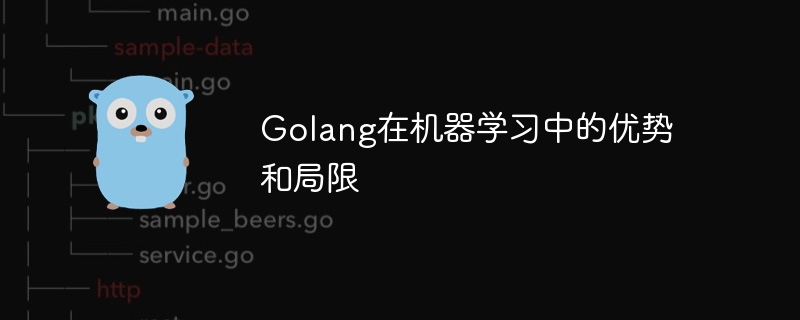
Golang has advantages in machine learning, including high-performance concurrency, cross-platform compatibility, memory safety, and built-in containers. However, it also has limitations, such as low-level memory management, a restrictive type system, and lack of GPU support.

High-performance concurrency:
Golang's Go coroutines and channel mechanisms provide a high-performance parallel programming model that is ideal for handling data parallelism and concurrency in machine learning algorithms.
Cross-platform compatibility:
Go programs are compiled once and can run on multiple operating systems and architectures, eliminating platform compatibility issues.
Memory Safety:
Go’s memory management model ensures memory safety through a garbage collector, eliminating common problems such as memory leaks and segfaults.
Built-in Containers:
Go provides various built-in container types such as slices, maps, and channels, which are ideal for storing and processing machine learning datasets.
Low-level memory management:
Go does not provide direct access to the underlying memory layout, which may limit certain tasks (such as image processing) performance.
Restrictive type system:
Go's type system is more restrictive than some other languages (such as Python), which can limit code flexibility, especially for changing Machine learning pipeline.
Lack of GPU support:
Go does not have native GPU support, and for machine learning algorithms that require GPU acceleration, you may need to rely on external libraries or other programming languages.
Use Golang to write a simple linear regression model:
package main
import (
"fmt"
"math"
"gonum.org/v1/gonum/floats"
"gonum.org/v1/gonum/mat"
)
func main() {
// 输入数据
X := mat.NewDense(100, 1, nil)
Y := mat.NewVecDense(100, nil)
for i := 0; i < 100; i++ {
X.Set(i, 0, float64(i))
Y.Set(i, float64(2*i+1))
}
// 模型训练
XT := mat.Transpose(X)
XXT := mat.NewDense(2, 2, nil)
XT.Mul(XT, XXT)
XTXinv := mat.NewDense(2, 2, nil)
floats.Inv(XTXinv, XXT)
XTY := mat.NewDense(2, 1, nil)
XT.MulVec(Y, XTY)
theta := mat.NewDense(2, 1, nil)
XTXinv.Mul(XTY, theta)
// 模型预测
input := 10.0
output := theta.At(0, 0) + theta.At(1, 0)*input
// 输出预测
fmt.Printf("预测值为:%.2f\n", output)
}
The above is the detailed content of Golang's advantages and limitations in machine learning. For more information, please follow other related articles on the PHP Chinese website!




